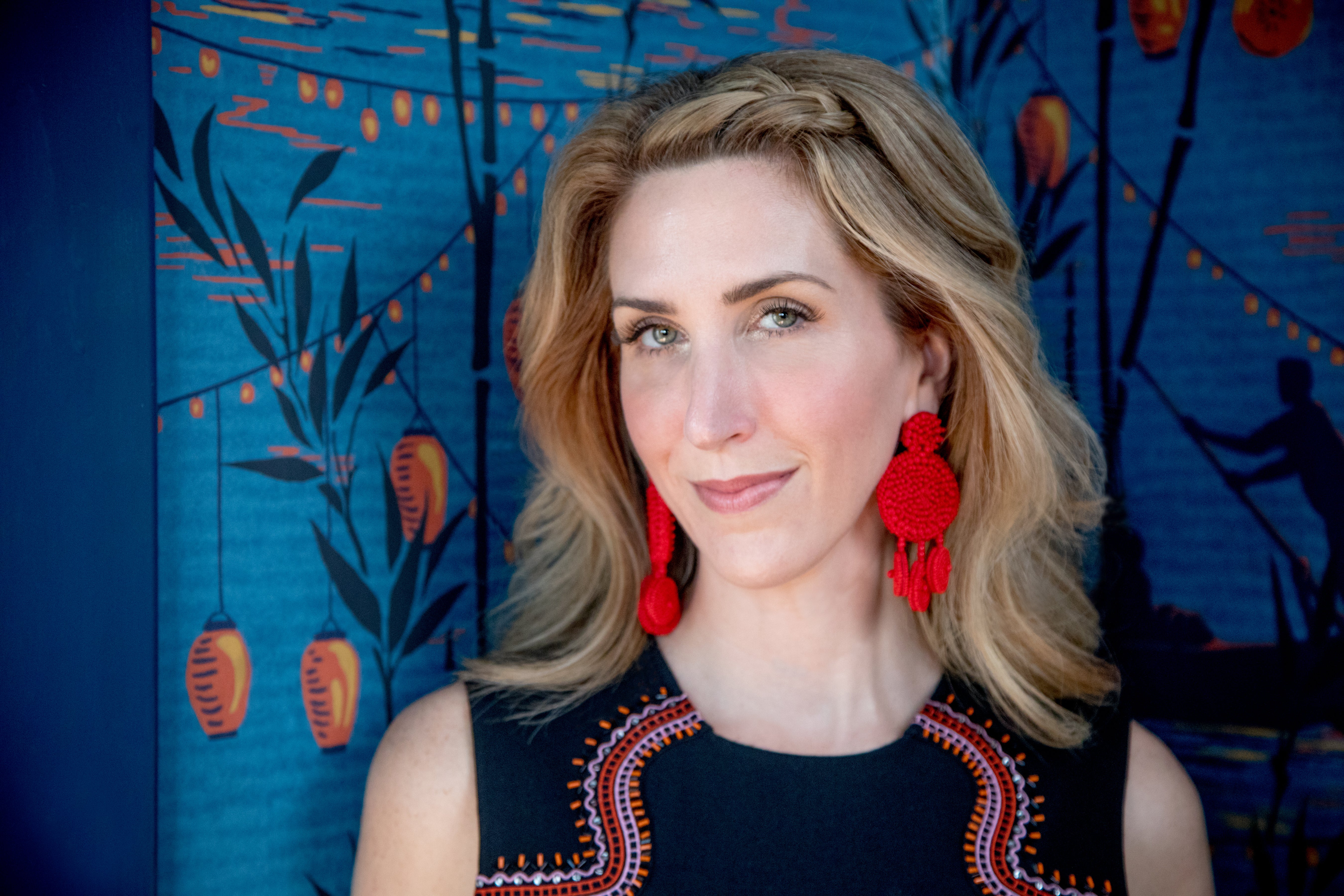The 50 States Project is a yearlong series of candid conversations with interior designers we admire, state by state. Today, we’re chatting with Ann Arbor, Michigan–based Krista Nye Nicholas, who founded Cloth & Kind in 2011 and then partnered with Tami Ramsay after they connected over a gorgeous image on Pinterest. Nye Nicholas lets BOH in on how she and the Athens, Georgia–based Ramsay made their original business plan come true in less than a decade, why they chose a showroom over a shop, and how strong systems helped their business weather the COVID-19 storm.
What was your path to founding the firm? You and Tami have always been halfway across the country from one another, right?
Yes. We both had previous lives—she was a critical care nurse for almost 20 years, and I was in magazines on the publishing side, working at Condé Nast for the bulk of my career—but we had both always been passionate about design and studied it as our passion and hobby. Like many [designers], we started doing our own projects and projects for friends and family. We did not know each other until we were both finally taking the steps to start our own businesses.
How did you connect?
We met in a comment thread on Pinterest, which is so random. We were both friends and followers of Molly Andrews of [antique furniture restoration company] Chairloom, who had pinned a piece I thought was for sale—a vintage rattan chaise lounge that had been re-covered in an amazing Susan Hable fabric. In the comments, I was like, “Sold. I’m buying that.” And Molly was like, “Oh, no, this is just an inspirational picture by Tami Ramsey—do you two not know each other? Because you would love each other.”

That’s amazing—and you met offline from that recommendation?
We were both hugely into artisanal textiles and had a similar aesthetic and sensibility in the limited amount of design work we’d each done up to that point. We started talking on Pinterest, and then were like, “Let’s take this offline!” We called each other and really hit it off. We joke it’s kind of like when you meet your significant other—this instantaneous connection. We were at very similar stages of getting our businesses up and running, and started talking about how we invoice clients [and so on].
We talked on the phone several times, then decided to go to the Alt Summit [for female entrepreneurs in Palm Springs] and room together a couple months later. At the end of the four days, we were like, “We’re going into business together.” It’s worked out so fortuitously. We have strengths that are extremely complementary and share a similar aesthetic that has evolved together.
On July 23, national sales training and business development expert Alison Mullins guides you through the process of visualizing your dream design client—and using data you already have to attract more of them. Click here to learn more and remember, workshops are free for BOH Insiders.
So you’ve always had two offices, one in Michigan and one in Georgia?
Yeah, we’ve done it this way ever since. We have team members in both offices but are truly collaborative. We’re one company and do everything across offices, basically.
How do you navigate that split?
At first it was just the two of us. When we hired our first project manager, we were open to that person being in either location, but ended up finding the right person in Athens; she project-managed for both of us for a while, and then we grew and hired a project manager in Ann Arbor. Initially, Tami and I did all the design work together. It’s kind of like a marriage—we know how to finish each other’s sentences, and it eventually evolved as we grew and had more team members and projects [such that] Tami would lead the design projects in the South and East region out of Athens, and I would lead them in and around Ann Arbor, Detroit, Chicago, St. Louis.
We have projects all over now. We know to involve the other if we ever hit a stumble or bump—to call and be like, “What would you do here?” We both still lead projects in our respective areas, but we’re on Google Hangouts daily, and so is our whole team. We did a little downsizing during COVID, unfortunately, but there are six full-time people.
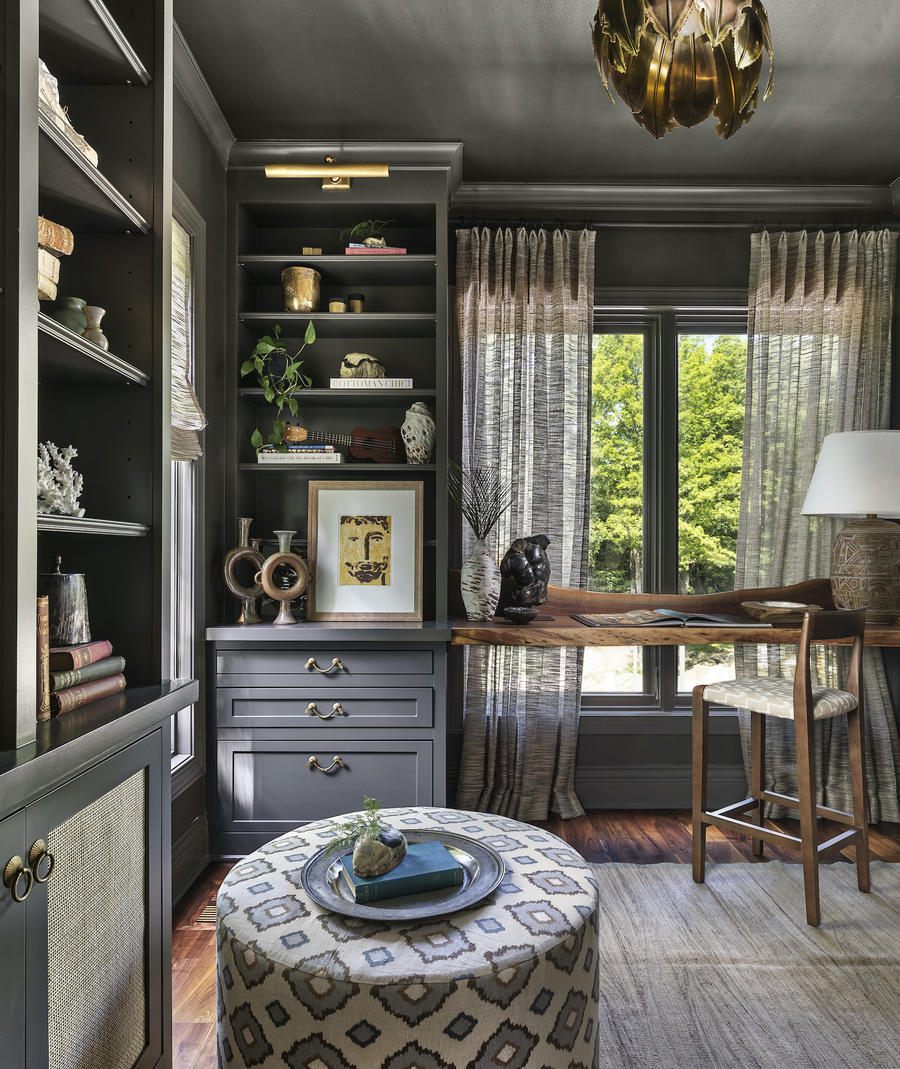
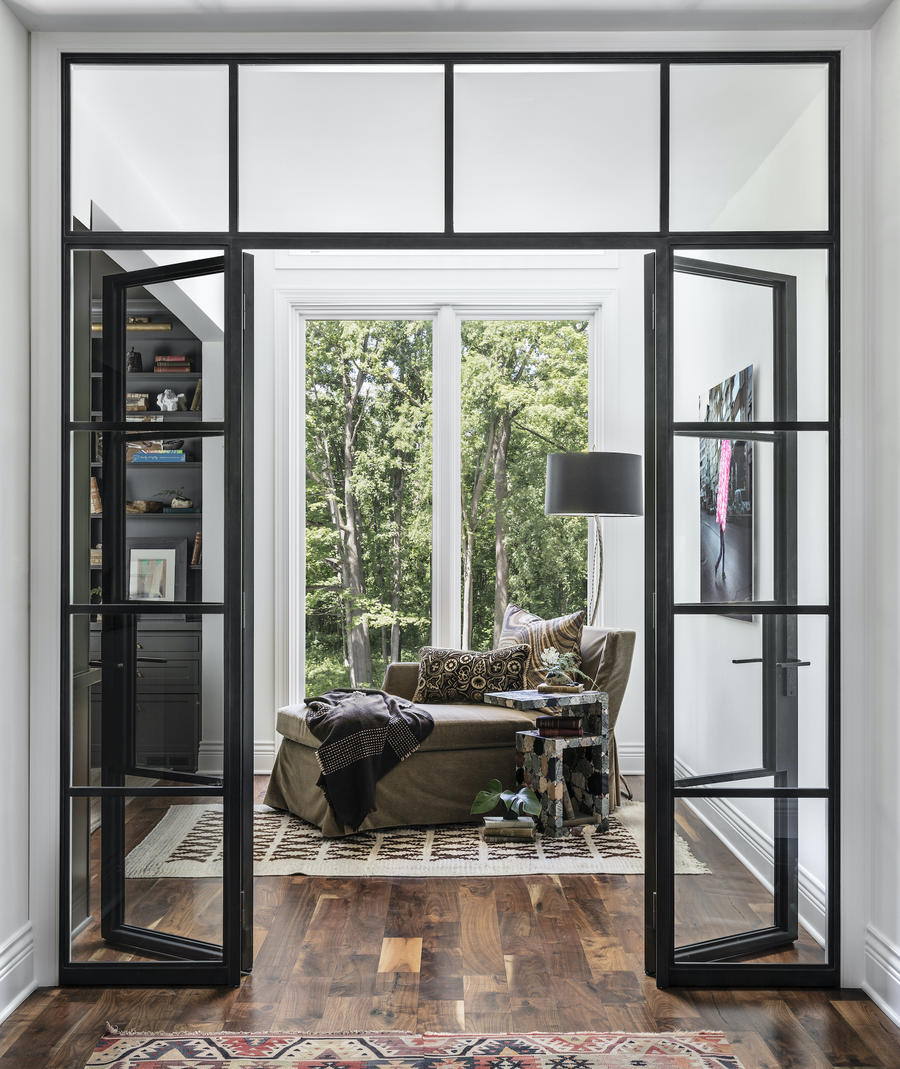
On the business side, how do you handle the divide?
We’re extremely systems- and data-oriented, and invested pretty heavily in systems in the beginning. We went all in with Studio Designer, and I’m so glad we did. We use it for our back-end accounting as well as all of our project management. We invested a lot of time and energy in getting that set up correctly and in getting our project management process templatized. For every project, we know the exact steps of everything that needs to happen and any team member that joins is able to quickly get on board.
The creative piece is what I think all of us in this business can do seamlessly and effortlessly and love, but the business and financial side of it has been paramount for us. I think it’s really enabled us to weather storms like COVID, to be honest with you, because we knew exactly where we were financially, exactly where we were with every detail of every single project, and knew what levers we could pull back on to conserve funds.
How do those systems impact the client experience?
We use Asana as our daily task list, and that’s where we’ve set up all these templates on the back end. But from the client’s standpoint, we want it to be effortless and easy, and to make sure they’re getting consistent communication from us at every single point in the project so that they’re never left wondering, “What’s happening now?” There are these odd gaps of time in a project—you do all the design work and then they’re like, “OK, I paid this huge chunk of money, now what’s happening?”
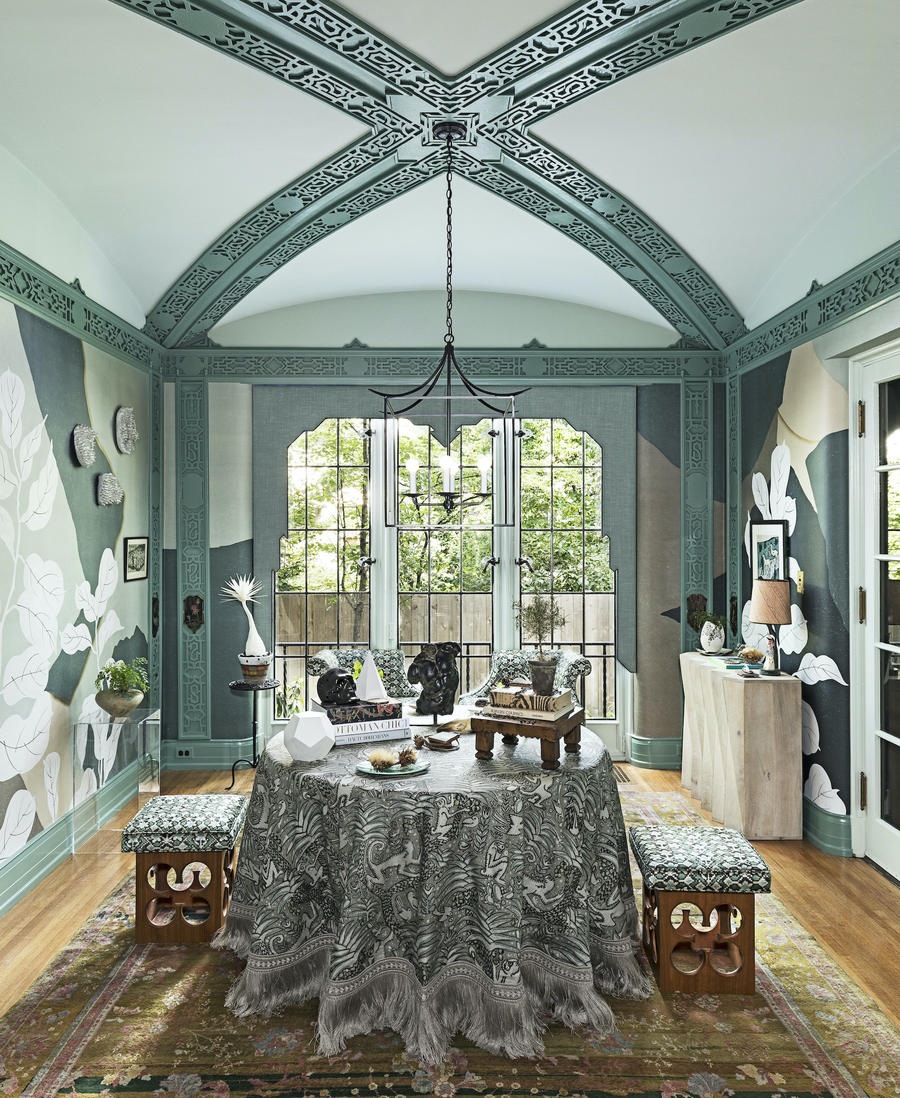
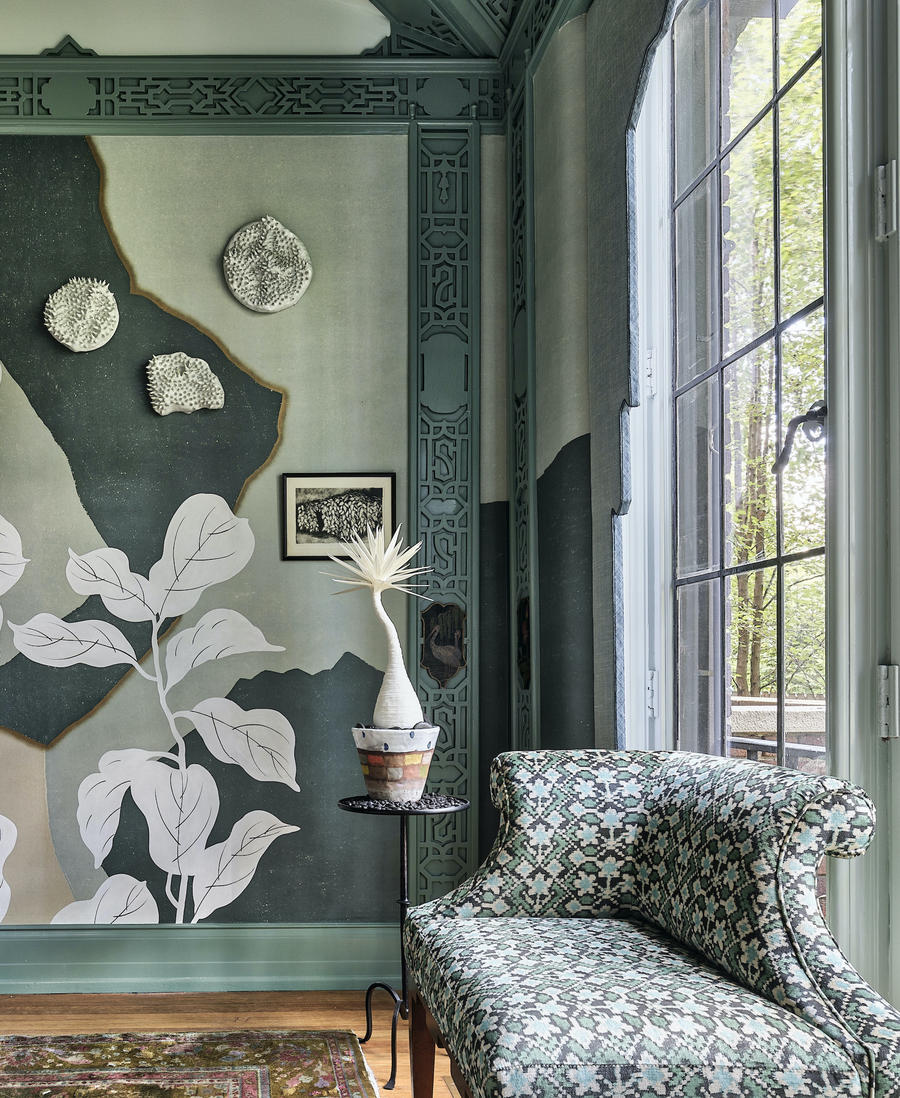
What does that client communication look like?
We take advantage of the back-end client portal that Studio Designer offers so that they can log in and see where they’re at, track the last payment they made [and see] what invoice it was applied to, and what the status is of all the things we’ve ordered for their project. [They can find answers] to questions like, “Are we still on target for the installation date?” What we’ve found is that most clients don’t even take advantage of that.
Is it comforting to them that it’s there?
It is. It’s interesting: When we’re first meeting with clients and go over all of our systems, I think that’s where it’s comforting—they [immediately] have a level of trust that it’s super super buttoned-up. And that’s important to us too. They know that at any given time, we can tell them exactly where we’re at with anything on a project, from financial to expediting.
We instituted weekly update emails on Fridays, regardless of what’s happening [on a project]—even if it’s just one or two sentences—because people weren’t logging in. We were all excited that we could give them this portal and clients really weren’t taking advantage, but they do appreciate the weekly emails.
‘Transparency’ has been such a buzzword in the industry lately—what does that mean for you and your clients?
It’s huge, right? When Tami and I first partnered up, we didn’t know each other from Adam. We wrote a business plan, and that was one of the key concepts: We wanted to always be super authentic and very transparent. Maybe every part of the country is different, but in [both of] our markets, clients that had worked with designers before [felt the experience] was often shrouded in secrecy and that they had no clue what they were being billed for, what the markup was, or how things were working.


Did you develop a clearer way to tackle billing?
We have a very simple method of explaining our fees to clients: We bill hourly for our time in 15-minute increments, and then we also split our discounts with them evenly. Those two buckets together make up how they are compensating us for everything, but we always try to drive home the fact that they’re not paying us for finding this one chair or that one sofa. It’s the creative vision—the culmination of all that is what they’re paying us for.
When you say you split the discount, do you mean that you’re finding the midpoint between the suggested retail price and your price, no matter what your discount is, for every item?
Yes, exactly! We’ve set it up in Studio Designer so that we know exactly what our discount is on every single vendor. A lot of them now have MSRP prices available too. After all these years of doing this, we have looked back on all the data—like so many designers, I feel like we’re constantly reevaluating, and we are getting ready to move to [charging] a room fee plus a flat markup on product.
Why the shift?
We’ve been talking about making this change for a long time. We talk with our designer friends about it all the time and are constantly polling people on what works. And COVID has shone a light on everything. I think the bottom line is that there’s no one-size-fits-all [solution]. Everyone does everything differently. For us, the biggest takeaway from COVID was we just had to simplify. We just want to focus time and energy on the things that matter and not have extra complications just for the sake of it. I do think it will be easier to explain to clients, or easier for them to digest, but it’s really about simplification.
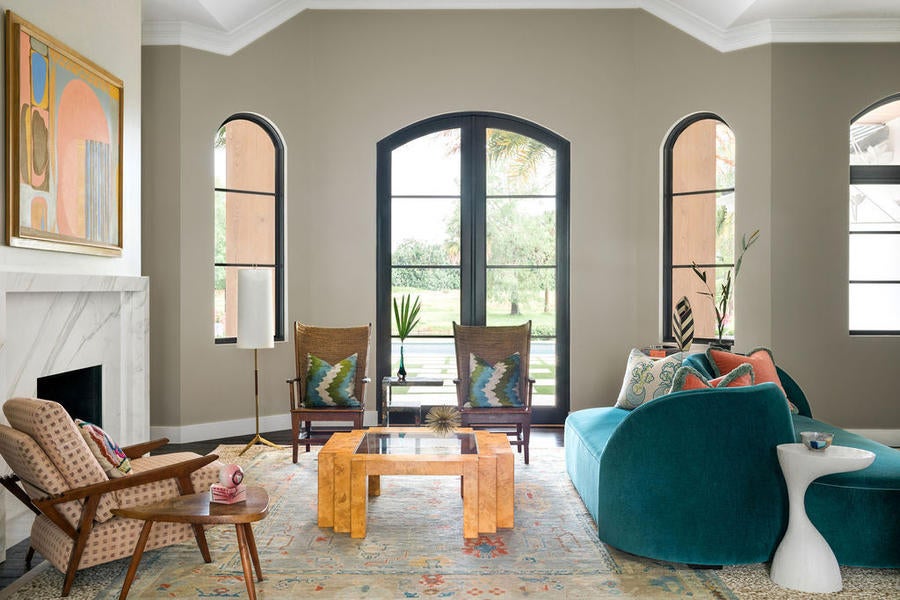
Do most clients know that there’s a retail price and that you’re buying at a discounted rate, or do you have to explain that entire system?
We explain that system. I think most of them get it in theory but don’t really understand how it works.
How will that conversation change as you shift strategies?
We’re working through that right now because we’re aware of not wanting to overwhelm people with information that they don’t need. It’s kind of on a client-by-client basis, I think. Some are interested and ask more questions, so we’ll go deeper; [for others] we’ll just say it’s a flat markup of this percent and they’ll be like, “OK, that’s cool.” I think where it’ll be a lot easier—clients are always asking how to know what it’s going to cost in terms of hourly billing. We have very good estimates from historical data, so we always say, “It’s typically X percent of the overall budget,” but [the new system will] be really easy, because now it’ll be a flat room fee and we can just divide it out over a set number of months.
How did you figure out the price per room?
We looked at a lot of our past projects and sliced and diced it every which way to Sunday. Basically what it boils down to is, we came up with an average room fee and then bumped it up. We’re hoping it will be a little more profitable, because even though we’re very diligent about tracking our time, I think we all sometimes think, “OK, I’m just not going to [worry about tracking] these emails or these text messages.” The biggest concern is obviously that you have clients who are just going on and on, texting you all hours of night and day when you move to a flat room fee. So we’re building in parameters. It’s up to us to say, “We don’t respond on weekends or after 6 p.m.” That’s just us being accountable for that. We also have an unofficial “no assholes” policy, so if somebody’s an asshole, we won’t take them on as a client anyway!

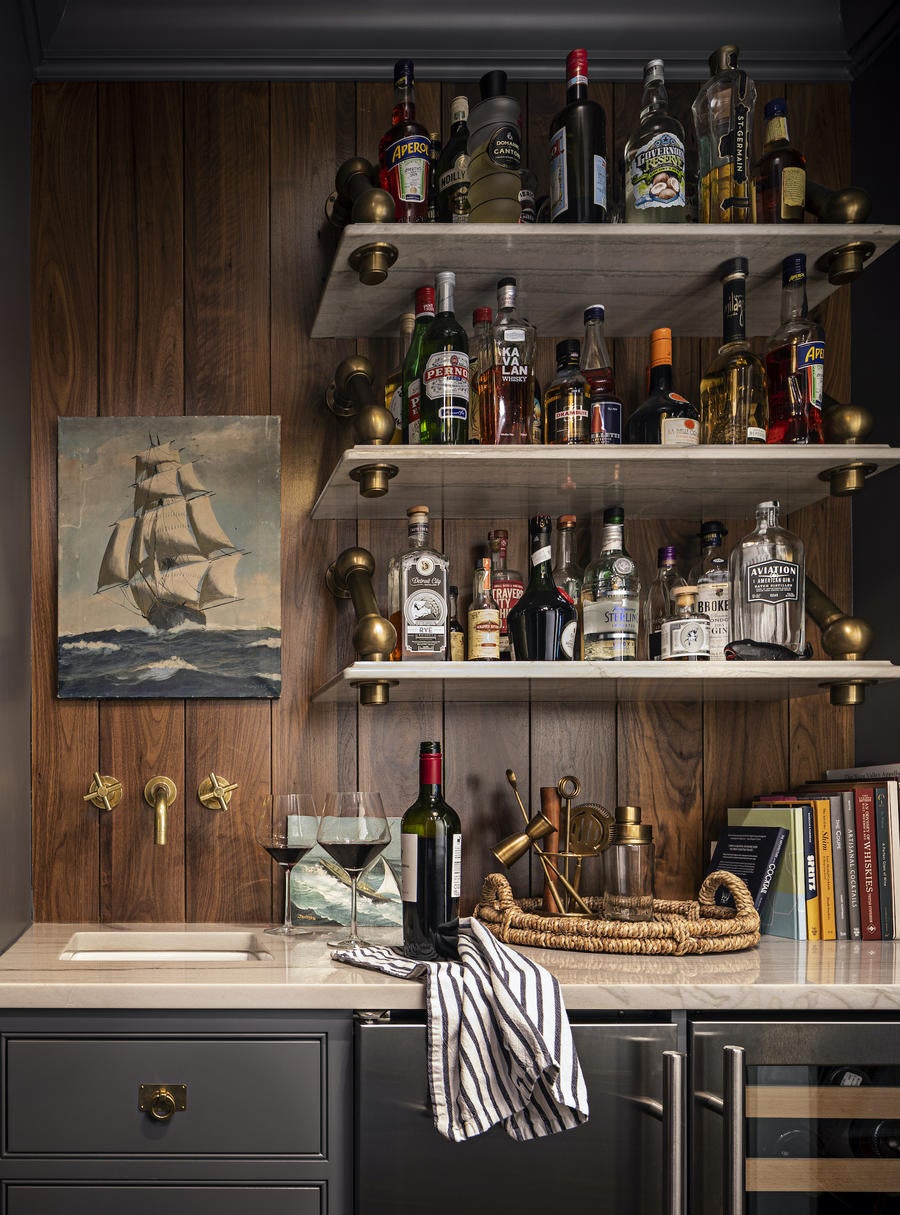
What else was part of your original business plan?
We always envisioned having something to do with artisanal textiles. In the early part of the business, we had a blog that was maybe more well-known than even our design work until we started really having meaningful work to share. We always said we were songbirds for artisanal textiles and wallcoverings and artisans, and that remains true. We knew we would have some sort of a shop or showroom, and that has happened: We now have a showroom in Ann Arbor, so we’re the Midwestern representation for 15 textile lines—fabrics we’ve used for so long in our projects and are really happy to represent. We actually just reread our business plan and were like, “Oh! We did this! Everything has come true!”
That’s amazing. When did you open the showroom?
Two years ago.
How did you know the time was right? And would you do it again?
We didn’t [know the time was right]. You’re asking me at a good time, because up until six months ago, I probably would have said no. Somebody that has a showroom told me when we were just getting started that the first year is like learning to crawl, the second year is like learning to walk, and after that you’re finally like, “OK, I got this.” At the time I was like, “We’re going to get this in no time!” And now—well, it turns out [that prediction] was very true.
What are the early challenges?
Tami and I both had very high expectations for ourselves and for the business. With the interior studio, the two of us had very slowly and methodically built the systems from the ground up, having our hands in everything and the time to refine it as we learned and grew. When we opened the showroom, we actually opened that and a shop, so there was an open-to-the-public component where everything was priced at retail, but then we had the wings with the fabric and everything. We just did too much at once. We mistakenly thought, “Oh, we’ll just have this cute little retail shop, but it’s really all about the showroom.” But what happened is the retail piece took so much time and energy away from what really mattered that it just about killed us both. It was like trudging through mud on a daily basis.
In December, Tami and I went away with [California- and Maine-based interior designer] Grant Gibson to India and had this moment of sitting there and just talking: “We’ve got to get all the inventory for the shop floor, we’ve got to change everything, we’ve got to sell this existing inventory.” And we were like, “We don’t even like this. We don’t like it at all.” It’s like one of those Eat Pray Love moments in India. So we just decided we weren’t going to do it anymore. We came back from India and shut the shop down.
What’s changed since then?
We’ve been able to redirect all that energy [we were spending on managing] employees and the public coming in and talking for a long time and then just buying a candle. All of that, we realized, was taking away from the showroom, not to mention our interior design studio. We still have the online shop, but the energy that we’ve been able to put into the showroom and back into the design studio feels so good. It’s on the right track.

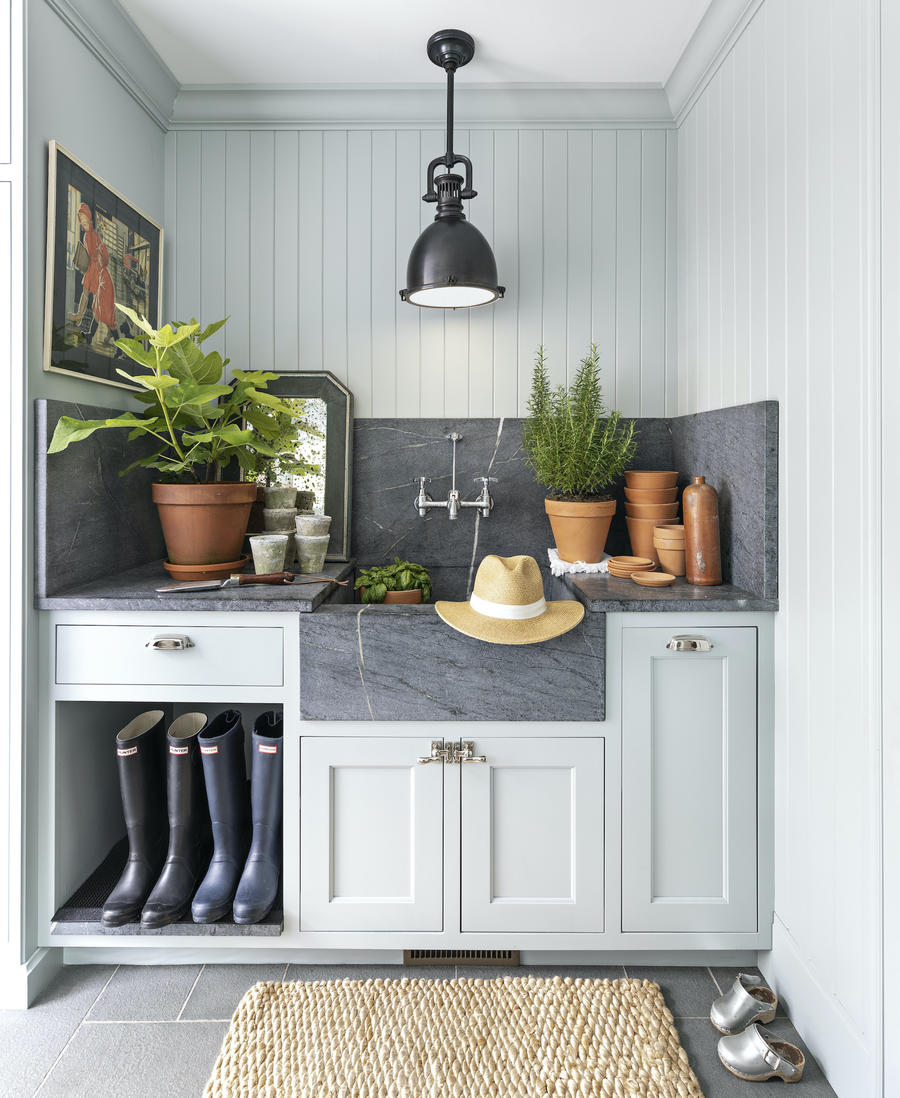
Did you just take over the retail footprint with more showroom?
We’re actually going to move. We’re in a 3,500-square-foot space, but we’re looking for a great location for the showroom, which will be open by appointment only and won’t be as big.
Did retail bring design customers? Do you feel the loss of it in that way?
No, it ended up being really separate businesses—that’s what we realized. To be honest, it was mostly designers buying things at designer net that we had at retail. We can still do that on a smaller basis in a showroom, but without everything that goes along with having a retail shop.
On the design side, how many projects are you working on typically, or right now?
Right now we have five projects that range from whole home and new build to several rooms in a home. It’s been interesting with COVID, because we have opened up [our services] to virtual design, where Tami and I get on a call with someone and maybe just help with a room. But before that we were evolving to the point where we just had larger-scale projects, and I guess we still are mostly in that place.
Are the five projects across both offices?
Yes. But there’s a handful of longtime clients that are constantly like, “I want more art,” so there’s an underlying base, but the five really big ones right now.
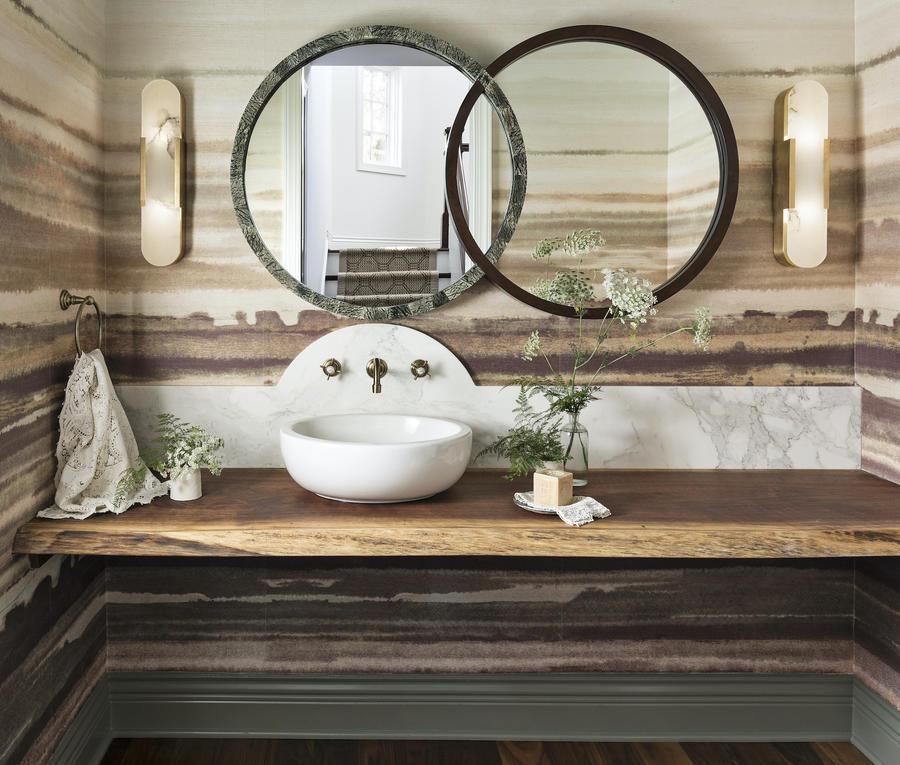
How do clients find you?
Typically word of mouth or social media. Some of our biggest clients found us on Instagram or Dering Hall.
What are people coming to your firm for?
Usually it’s the way that we use textiles and layer and color. And we incorporate a lot of vintage and one-of-a-kind. We start every project by digging deep, asking clients what’s meaningful to them in terms of their lives, their travel and their family, so that we can create an intensely personal space for them.
Is there a certain aesthetic to your work? Or does it change from family to family?
It changes from family to family. We are really excited about this project we’re doing in California right now, because it’s extremely modern and spartan, which is going to be great for our portfolio. Tami and I really love the layered, accumulated-over-time look, but we also love doing projects that are not that. As creatives, it’s fun.
You said you have your unofficial ‘no assholes’ policy, but how do you actually decide what projects to say yes to?
When someone reaches out, we do a 20-minute phone call and ask a few questions. If it feels like a good fit, then we’ll go meet with them—and not to oversimplify it, but it really is just like, “Are these kind people? Are they open and genuine? Do they make eye contact?” You know, the basic things you would look for in somebody you want to hang out with.
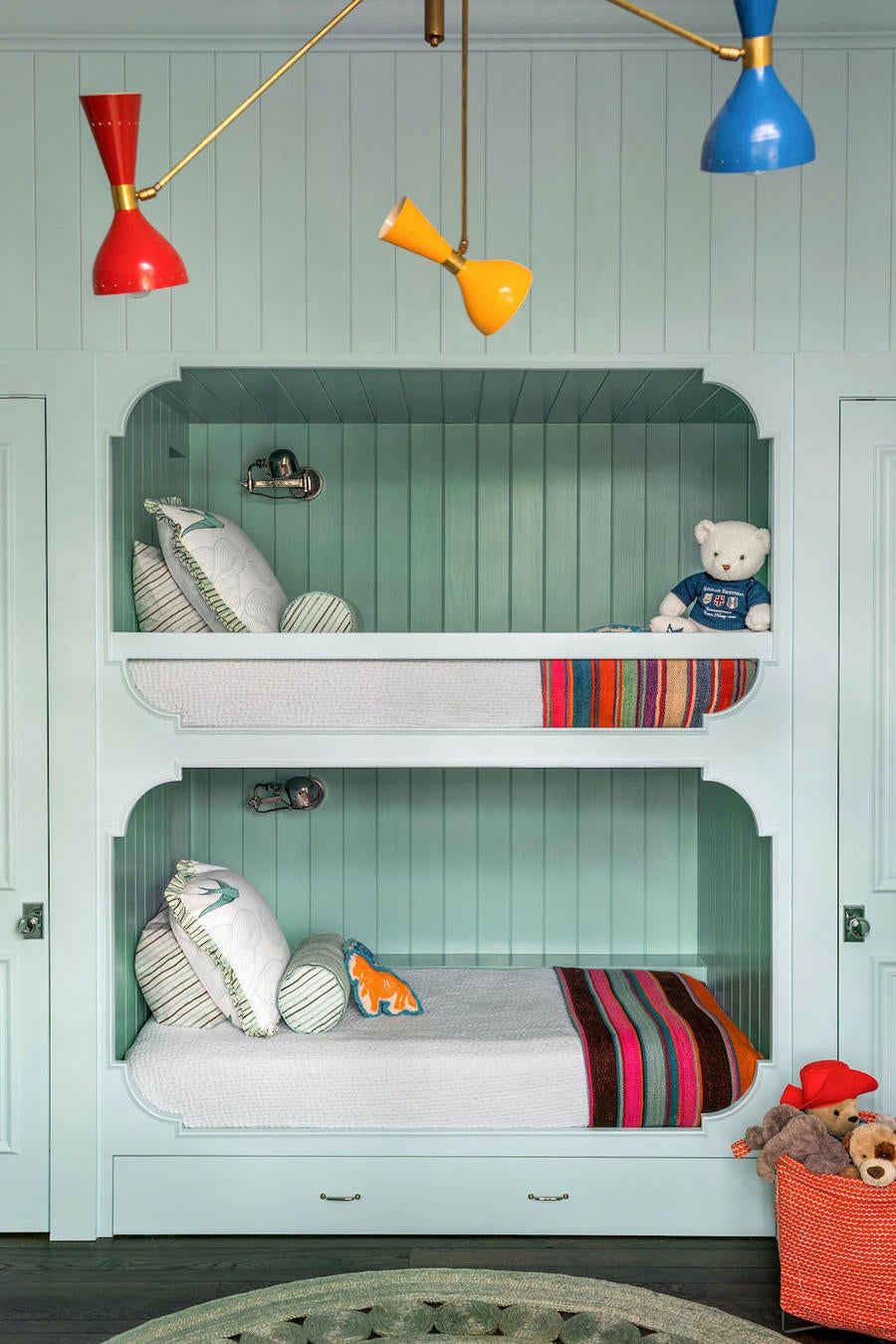
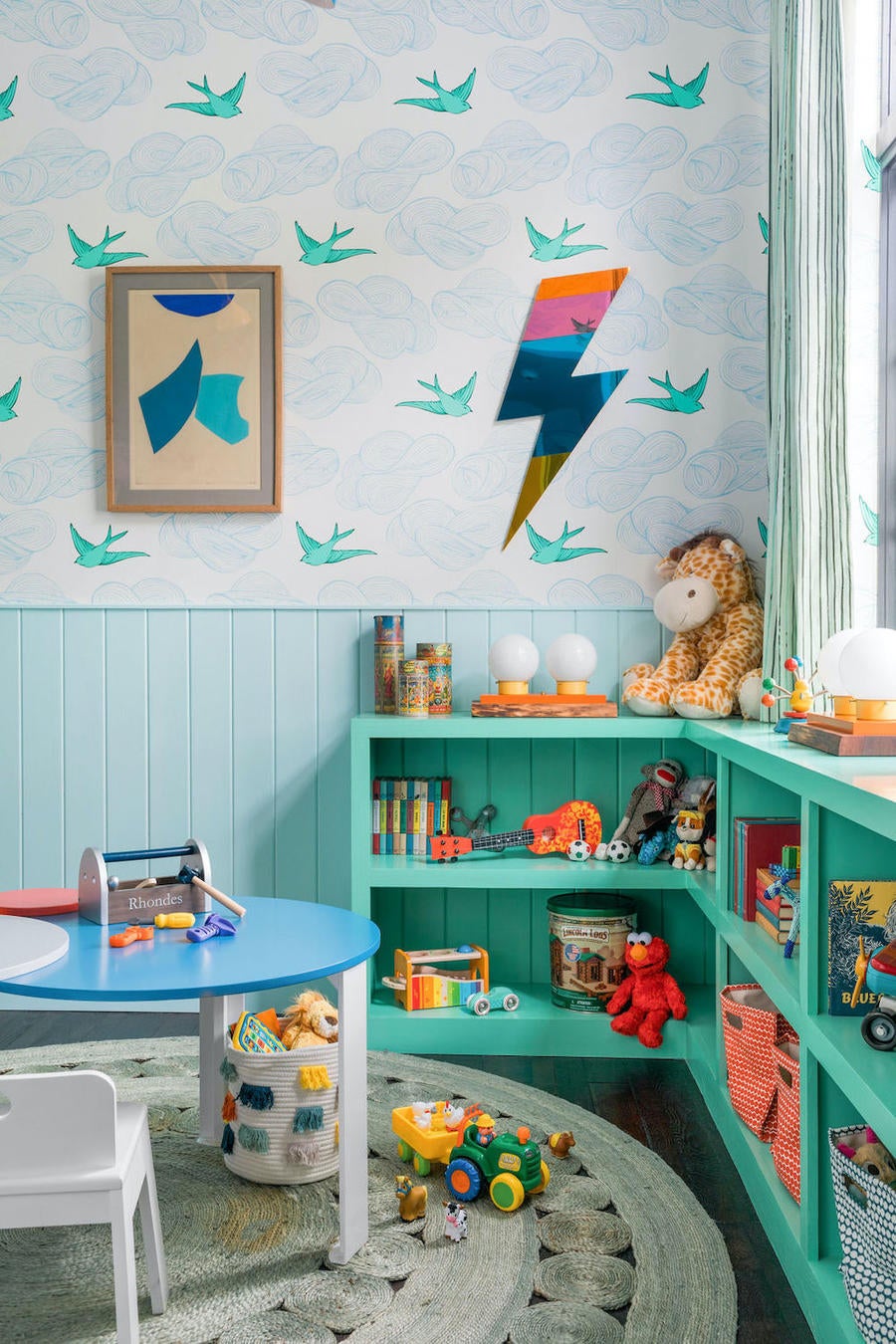
Tell me about the Michigan housing market and the types of clients you have there.
I’m from Chicago and moved to Michigan about 10 years ago, when my husband got a job in the area. I left Chicago kind of kicking and screaming, but Ann Arbor is pretty incredible. I really love it here. The University of Michigan is here, and ironically, Tami’s in Athens, where the University of Georgia is, so we both have these similar-sized college towns that are creative pockets.
The market here is interesting. There are a lot of academics—it’s not flashy. It’s like the opposite of [keeping up with] the Joneses, which is wonderful in so many ways. There are some very affluent pockets around Detroit where it very much is about how big your house is, your SUV and all that stuff. But in Ann Arbor, where I live, it’s not. And it’s very refreshing. From a design standpoint, it’s interesting, because people want beautiful, nice things, but they don’t want to be overly flashy about it. “The bigger, the better” is not really our ideal client. It’s the people that place more value on the beautiful, personal life.
How big are the projects you’re working on, then?
So the house in California is close to 7,000 square feet, so that one’s quite large. And then our other new build, in the Detroit area, is about 4,500, so more modest. But we just completed a project in St. Louis, Missouri, that was a 15,000-square-foot historical home.
Where do you typically shop? Where do you look for resources outside of your showroom?
Well, like many designers, we travel for inspiration. So Tami and I have been to Morocco and India together, as well as all over the country. We go to High Point Market twice a year—we never miss a Market. We love antiques and vintage, so the Antique & Design Center at High Point is awesome, because so many of the dealers we love and work with outside of Market are there. It’s great to be able to see everything in such close quarters. [In addition to my local go-tos], Robert Massello is a vintage dealer out of Miami who has killer stuff. We have maybe 10 vintage dealers that we can text on a moment’s notice and say, “Hey, I’m sourcing for this project, I’m looking for X, Y and Z—what have you got?”
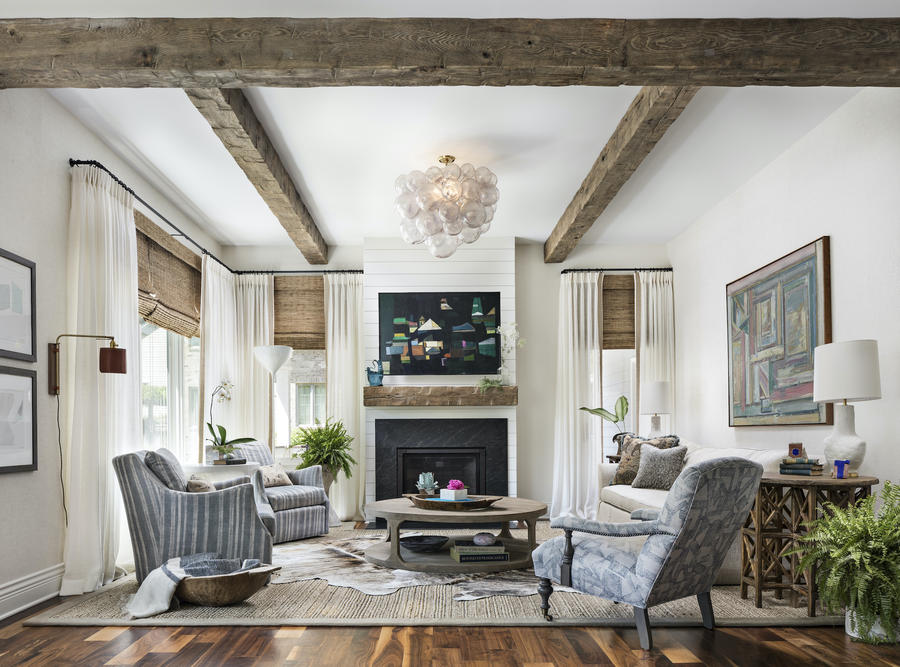
What is the biggest challenge right now as you’re looking at the months or year ahead?
We expanded so rapidly with the opening of the showroom and the shop, and then we intentionally started collapsing a little, so for us I think [the goal is] going to be to maintain that focus on staying small but mighty. That’s been the biggest lesson we’ve learned in the last couple of years.
We had this massive realization that as we grew, we lost touch with some of the nuances of our business and we don’t want to do that anymore. If we can’t be involved in a meaningful way, then we’re not going to do it. I think that was the biggest lesson for us. We have a lot of ideas and things we could pursue at any given moment, but we’re being much more intentional about slow and methodical growth.
To learn more about Krista Nye Nicholas, visit the Cloth & Kind website or find her on Instagram.
















